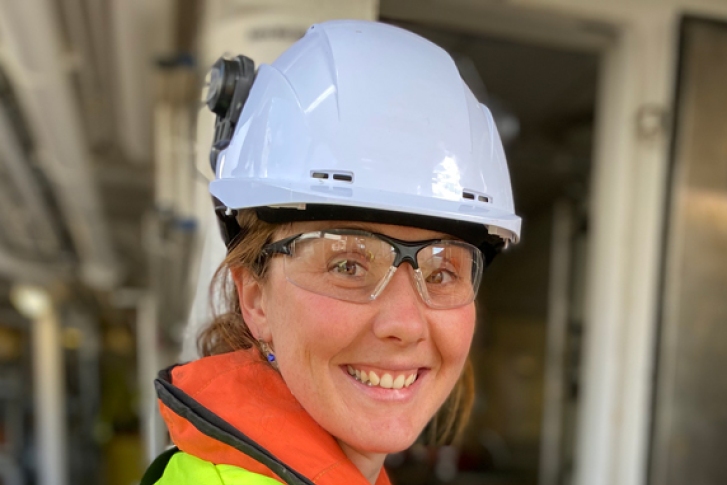During the 22-30 July R/V Tangaroa voyage, NIWA scientists headed out to the waters around Whakaari/White Island in the Bay of Plenty to survey changes to the seafloor since the volcanic eruption in December 2019. They also surveyed the chemical composition of gases released by the hydrothermal vents on what is known as the Calypso vent field in the Bay of Plenty.
NIWA Communications team member Pascale Otis recorded their work and the journey in this voyage blog.
22 July
For one last time, Evan Solly started the engines of NIWA’s research vessel Tangaroa and guided her out of Wellington. NIWA staff lined the seafront to salute his amazing career that has seen him take the ship to Antarctica and back a dozen times.
24 July
It's a special day on RV Tangaroa today - celebrating the Whakatāne High School ball with student Cameron Phillips, one of two Te Rūnanga o Ngāti Awa taiohi on board.
Marine Geophysicist Sally Watson explains her work mapping the seafloor and taking samples from the water column to understand geological processes shaping the underwater realm.
Measuring chlorophyll, organic nitrogen and carbon levels, PhD student Alex Hayward looks at how much marine life is in the water around the Bay of Plenty during winter.
25 July
Marine geologist Dr Joshu Mountjoy is mapping the seafloor landscape around Whakaari/White Island to understand how much sediment was dislodged in the eruption and where it has gone.
NIWA marine geologist Arne Pallentin is looking for telltale gas bubble 'flares"—using a multi-beam echo sounder—that indicate new volcanic activity in the Calypso Vent Field. The research adds to a series of previous surveys that show how volcanic activity is changing over time in the surrounding Bay of Plenty area.
26 July
"For us, Whakaari is our whaea, she is our tupuna, and also a place of our mahinga kai. I didn't realise how much I'd missed her..." Associate Professor at University of Waikato Dr Kura Paul-Burke (Ngāti Awa) , describes her connections with Whakaari/White Island while revisiting the area on board the RV Tangaroa.
27 July
NIWA Marine Acoustician Dr Yoann Ladroit uses multi-beam echo sounders to map the bathymetry around Whakaari/White Island very quickly and with pinpoint precision. Yoann is also leading research into using acoustics to find underwater gas bubble flares and then compare these to the chemical composition of water samples taken at the same locations.


